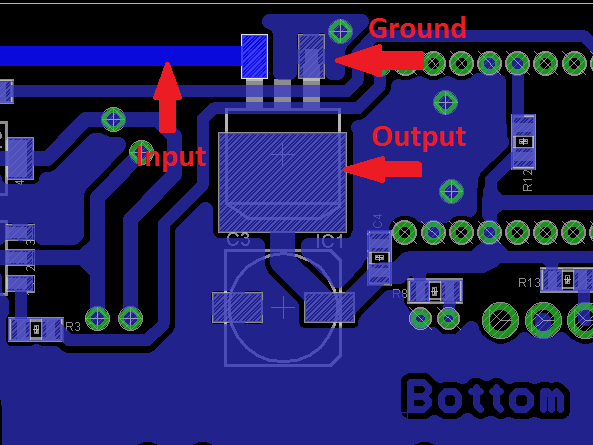python常見異常類型
在程序運行過程中,總會遇到各種各樣的問題和錯誤。
有些錯誤是我們編寫代碼時自己造成的,比如語法錯誤、調用錯誤,甚至邏輯錯誤。下面這個例子,在輸入 if 后輸入回車了,沒有按照 Python 的語法規則來,所以直接拋出了語法錯誤。
>>> if
File "", line 1
if
^
SyntaxError: invalid syntax
還有一些錯誤,則是不可預料的錯誤,但是完全有可能發生的,比如文件不存在、磁盤空間不足、網絡堵塞、系統錯誤等等。下面這個例子,使用 open 函數打開 demo.txt 文件,可是在當前目錄下并沒有這個文件,所以一定會打開失敗,拋出了IOError。
>>> fp = open('demo.txt')
Traceback (most recent call last):
File "", line 1, in
IOError: [Errno 2] No such file or directory: 'demo.txt'
這些導致程序在運行過程中出現異常中斷和退出的錯誤,我們統稱為異常。正常情況下,異常都不會被程序處理,而是以錯誤信息的形式展現出來。
異常有很多種類型,Python內置了幾十種常見的異常,就在builtins模塊內,它們無需特別導入,就可以直接使用。需要注意的是,所有的異常都是異常類,首字母是大寫的!
在發生異常的時候,Python會打印出異常信息,信息的前面部分顯示了異常發生的上下文環境,并以調用棧的形式顯示具體信息。異常類型作為信息的一部分也會被打印出來,例如ZeroDivisionError,TypeError。
>>> 1/0
Traceback (most recent call last):
File "", line 1, in
ZeroDivisionError: integer division or modulo by zero
>>>
>>>
>>> 10 + "1"
Traceback (most recent call last):
File "", line 1, in
TypeError: unsupported operand type(s) for +: 'int' and 'str'
正常情況下,我們都不需要去記住 Python 到底內置了哪些錯誤和異常類型,除非你需要去捕獲它,關于捕獲的內容,我會放在下一節。這一節先來認識一下 Python 中有哪些常見的錯誤和異常,對于新手,下面的內容大概過一下就好,不用深究,因為這些在你以后的編碼中都會遇到的。
1.SyntaxError
SyntaxError,是語法錯誤,可能是新手在學習 Python 時最容易遇到的錯誤
>>> while True print('Hello world')
File "", line 1
while True print('Hello world')
^
SyntaxError: invalid syntax
解析器會輸出出現語法錯誤的那一行,并顯示一個“箭頭”,指向這行里面檢測到的第一個錯誤。 錯誤是由箭頭指示的位置 上面 的 token 引起的(或者至少是在這里被檢測出的):在示例中,在 print()這個函數中檢測到了錯誤,因為在它前面少了個冒號 (':') 。文件名和行號也會被輸出,以便輸入來自腳本文件時你能知道去哪檢查。
2、TypeError
TypeError,是類型錯誤,也就是說將某個操作或功能應用于不合適類型的對象時引發,比如整型與字符型進行加減法
>>> a = 10
>>> b = "1"
>>>
>>> a-b
Traceback (most recent call last):
File "", line 1, in
TypeError: unsupported operand type(s) for -: 'int' and 'str'
3、IndexError
IndexError,是指索引出現了錯誤,比如最常見下標索引超出了序列邊界
>>> alist = [0,1,2]
>>> alist[5]
Traceback (most recent call last):
File "", line 1, in
IndexError: list index out of range
4、KeyError
KeyError是關鍵字錯誤,這個異常主要發生在字典中,比如當用戶試圖訪問一個字典中不存在的鍵時會被引發。
>>> profile = {"name": "王炳明"}
>>> profile["age"]
Traceback (most recent call last):
File "", line 1, in
KeyError: 'age'
5、ValueError
ValueError為值錯誤,當用戶傳入一個調用者不期望的值時會引發,即使這個值的類型是正確的,比如想獲取一個列表中某個不存在值的索引。
>>> int("1")
1
>>> int("a")
Traceback (most recent call last):
File "", line 1, in
ValueError: invalid literal for int() with base 10: 'a'
6、AttributeError
AttributeError是屬性錯誤,當用戶試圖訪問一個對象不存在的屬性時會引發。
比如字典有get方法,而列表卻沒有,所以對一個列表對象調用該方法就會引發該異常。
>>> alist = [0,1,2]
>>> alist.get(0)
Traceback (most recent call last):
File "", line 1, in
AttributeError: 'list' object has no attribute 'get'
7、NameError
NameError是指變量名稱發生錯誤,比如用戶試圖調用一個還未被賦值或初始化的變量時會被觸發。
>>> name
Traceback (most recent call last):
File "", line 1, in
NameError: name 'name' is not defined
8、IOError
IOError 為打開文件錯誤,當用戶試圖以讀取方式打開一個不存在的文件時引發。
>>> fb = open('demo.txt')
Traceback (most recent call last):
File "", line 1, in
IOError: [Errno 2] No such file or directory: 'demo.txt'
9、StopIteration
StopIteration為迭代器錯誤,當訪問至迭代器最后一個值時仍然繼續訪問,就會引發這種異常,提醒用戶迭代器中已經沒有值可供訪問了。
>>> alist = range(2)
>>> agen = iter(alist)
>>> next(agen)
0
>>> next(agen)
1
>>> next(agen)
Traceback (most recent call last):
File "", line 1, in
StopIteration
10、AssertionError
AssertionError 為斷言錯誤,當用戶利用斷言語句檢測異常時,如果斷言語句檢測的表達式為假,則會引發這種異常。
>>> alist = [0,1,2]
>>> assert isinstance(alist, list)
>>> assert isinstance(alist, dict)
Traceback (most recent call last):
File "", line 1, in
AssertionError
11. IndentationError
Python 是一門嚴格縮進的語言,如果縮進有問題,就會導致解釋器解析異常,拋出 IndentationError
>>> while True:
... print("hello")
File "", line 2
print("hello")
^
IndentationError: expected an indented block
12. ImportError
當你在使用 import 導包的時候,如果因為包名錯誤或者路徑不對、包未安裝,都會拋出 ImportError
>>> import oss
Traceback (most recent call last):
File "", line 1, in
ImportError: No module named oss
審核編輯:符乾江
-
python
+關注
關注
56文章
4800瀏覽量
84820 -
異常
+關注
關注
0文章
22瀏覽量
9263
發布評論請先 登錄
相關推薦
電橋電路的常見錯誤分析
電源 PCB 布局中的常見錯誤及避免方式
常見電位測量錯誤及解決方案
EEPROM編程常見錯誤及解決方案
aes加密的常見錯誤及解決方案
pcb板設計中的常見錯誤
服務器錯誤是怎么回事?常見錯誤原因及解決方法匯總
嵌入式C編程常用的異常錯誤處理
PCB線路板制造中常見的錯誤有哪些,如何避免?
PCB設計工作中常見的錯誤有哪些?





 Python中有哪些常見的錯誤和異常
Python中有哪些常見的錯誤和異常











評論